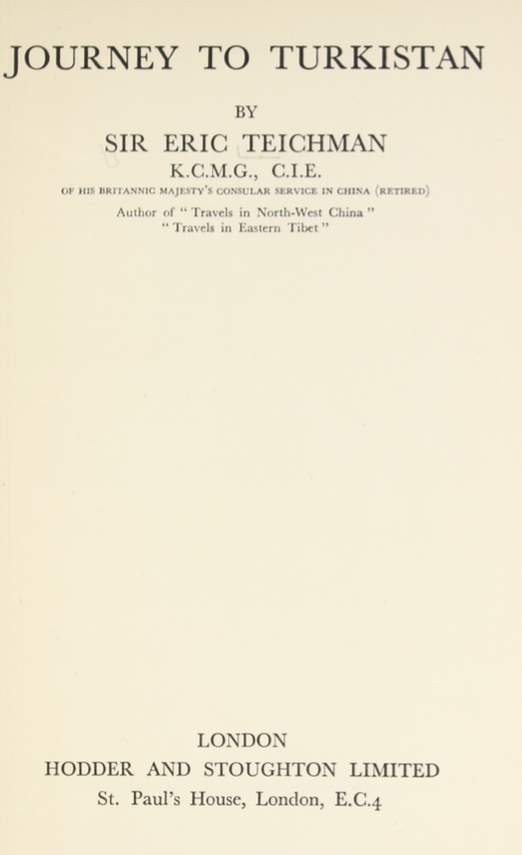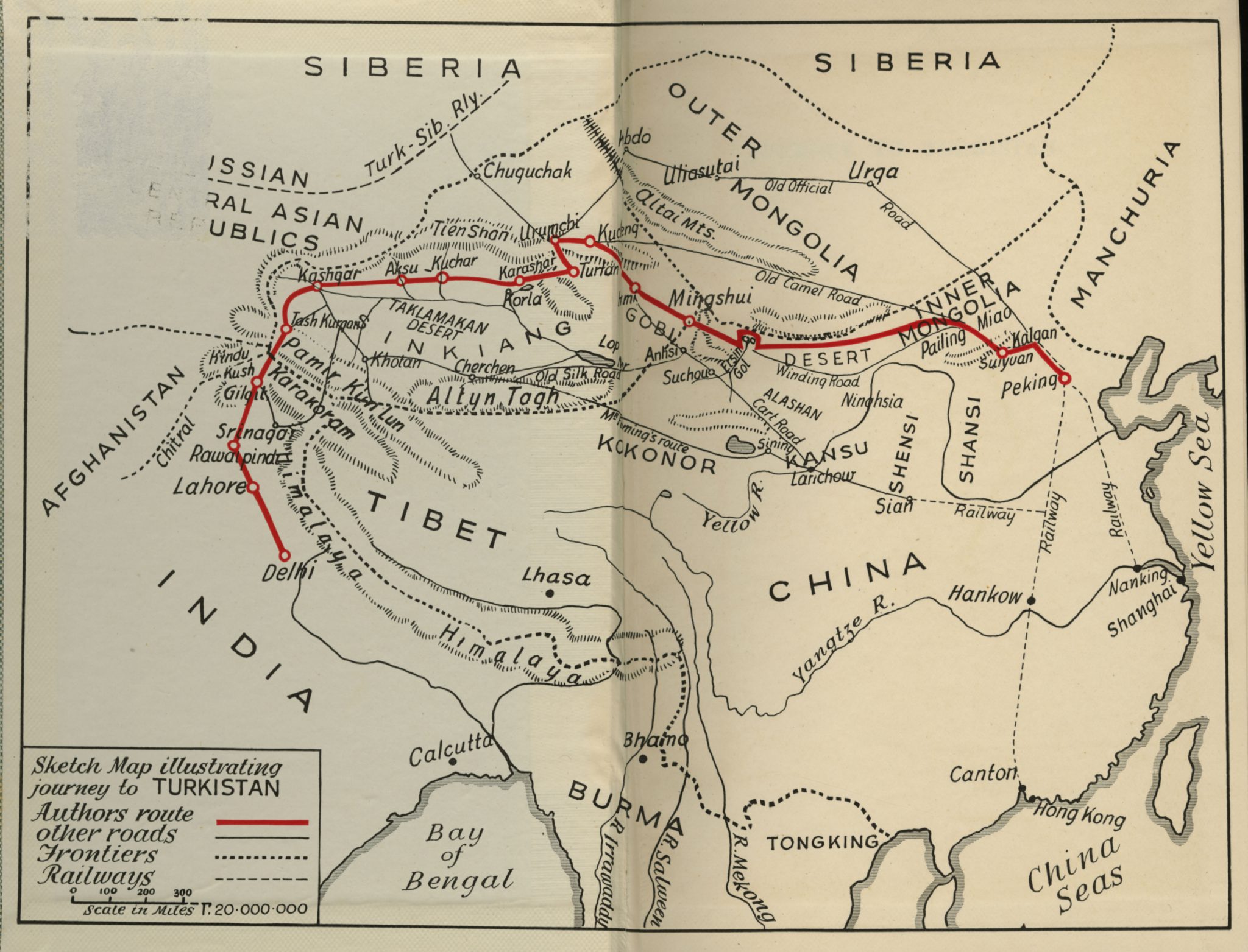Journey to Turkistan
Eric Teichman
Summary
Journey to Turkistan is a detailed account of the practical aspects of traveling through Eastern Turkestan in the 1930s. The author, Sir Eric Teichman, gives comprehensive descriptions of roads, distances, transportation, vehicles, as well as necessary equipment and supplies, giving the reader a feeling of being a fellow traveler. The book has an appendix containing an itinerary of the motor route from Beijing to Kashgar.
In 1935 the British Consul Eric Teichman leaves his post in Beijing and sets out for Chinese Turkestan, before returning to England through India. His journey from Beijing to India lasts for four months. He crosses Suiyuan by train and travels through Inner and Outer Mongolia, the Gobi desert, Hami, Urumchi, Turfan, and Karashar on a motor truck, from Kashgar to Gilgit on horseback and on foot, and finally takes a plane to Delhi. A great number of photographs taken during this journey are to be found in the book.
.
Detailed account
In an introductory chapter about Chinese Turkestan, Teichman summarizes the country’s geographical features, people and recent history. Similar surveys are given for the rest of his journey, including recent political changes in the different areas that he travels through. For instance, the author discusses the political status of Outer Mongolia before and after the Chinese Revolution of 1911 and after the “Great War” (i.e. WWI), the impact of Chinese and Russian policies on Central Asia, the Tungan attack in Urumchi in 1933, and the Muslim rebellion and the reinstatement of Chinese rule in Kashgar.
Teichman’s traveling companions are, among others, George Söderbom, a Swedish missionary newly returned from one of Sven Hedin’s motor expeditions to Chinese Turkestan, and Chinese and Mongol assistants, one of whom is Serat, Sven Hedin’s assistant from his expeditions to Sinkiang in 1928 and 1934. In Urumchi, the expedition meets up with Thomson Glover, who has traveled with his wife from his consular post in Kashgar. In Gilgit, they run into “Colonel Schomberg’s servant, Daulat [while] on his way to join Colonel Schomberg in India” (p. 178). (For Colonel Schomberg’s travel account and pictures of Daulat see: Between the Oxus and the Indus)
As a British Consular officer having served in China, Teichman sometimes dwells on the different points of view taken by foreign travelers in Chinese Turkestan: “At Kashgar my route converged with that followed by Mr. Peter Fleming and Mademoiselle Maillart on their remarkable journey earlier in the same year; when, coming from the Tsaidam and crossing the Altyn Tagh, they slipped unobtrusively into Southern Sinkiang and passed through the southern oases and Tungan-controlled territory to Kashgar. They saw Chinese Turkistan mainly through Tungan spectacles. On my journey, on the other hand, I and my party passed through the length and breadth of Sinkiang, but were all the time in Chinese-controlled territory; and, speaking as we did only Mongol and Chinese, we saw what we observed mainly through Chinese eyes.” (pp.150f.)
Chapter 12 is devoted to the recent political history of Chinese Turkestan. The following is a comment about the nature of British interests in Turkestan: “British policy in Sinkiang, as in China, seeks only peace and trade; and is, and always has been, patently benevolent to Chinese rule in Turkistan. We regard it as in British interests that the New Dominion should remain Chinese. Sinkiang has always in our experience been Chinese territory; we know and understand the Chinese as neighbours in the East; and any change would almost certainly bring some other Asiatic Power, Russia or Japan, up to the Indian North-West Frontier.” (pp.191f.)
Two maps can be found in the appendix, one displaying the author’s travel route in Chinese Turkestan and the other the motor route from Beijing to Kashgar.
.
Azize Güneş







































































































